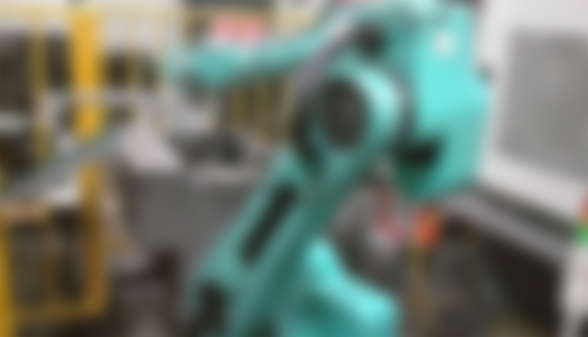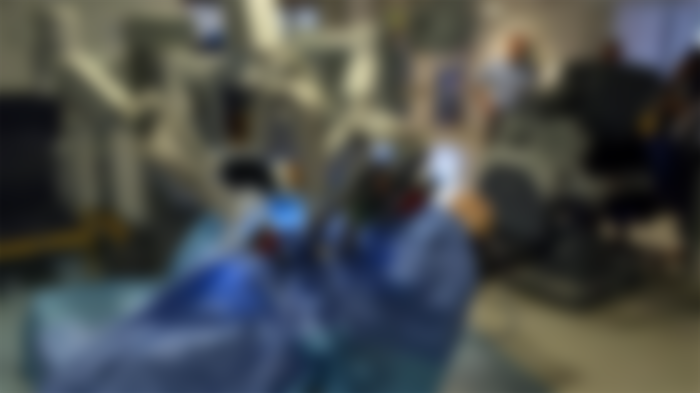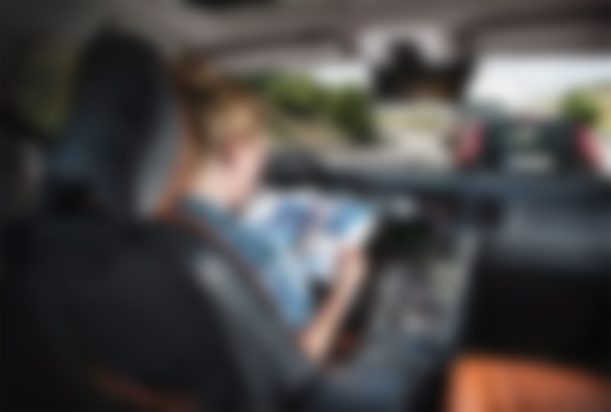Industries that robots have changed the most so far, and a few that you would never think would creep in at all.
In the summer, one of Apple's largest subcontractors, China's Foxconn, which became "famous" for reports of inhumane working conditions, announced that they would start including robots, so-called foxbots, in production, one of which costs close to 20 thousand euros.

One and a half million robots in the global industry:
1.Automotive and electromechanics:
The tasks of robots in the automotive industry are most often welding, painting and other forms of application of materials, machining and assembly. Various special features include quality control. Another distinct area of application of robots is electromechanics, where smaller and lighter robots are involved, and the tasks are similar to those in the automotive industry.
2.Aviation: greater monotony of pilot work, fewer accidents
But robots are penetrating many industries (by which we mean artificial intelligence in a variety of forms). The aviation industry is an example of how automation can take over the work of even the most skilled. In the 1980s, aircraft such as the Airbus A320 appeared on the market, where the computer took the lead not only in flying but also in controlling pilots. Computers monitor all maneuvers that pilots want to perform and strictly control that they do not exceed the permitted limits, otherwise they prevent them from activity. In the latest models, such as the two-story Airbus A380, pilots before they enter the desired parking position and the computer calculates the required braking force for the optimal exit from the runway. Crews are now more in the role of computer supervisors.
As a result, practicing the pilot profession has become so monotonous that the challenge is how to stay focused during the flight. The pilots of the former Northwest airline flew over their final destination for more than 200 kilometers in October 2009. However, there has been great progress in aviation safety. According to last year’s statistics, there were 265 deaths per 31 million flights, more than half the ten-year average of 720 deaths per equal number of flights.
3.Healthcare: The Greatest Advances in Surgery
The IBM Watson supercomputer is able to make a better diagnosis and adopt a more appropriate method of treatment based on extensive records of past patient treatments and continuous improvement of the database with new scientific knowledge in the field of medicine.

In surgical rooms, the benefits of robotization are manifested in greater accuracy, nicer and smaller incisions, blood loss and pain are less for the patient, and treatment is faster. Surgeons can operate the robotic arm via a so-called telemanipulator (the user is in physical contact with the robot) or via computer control. The advantage of the latter is that the surgeon can perform the operation anywhere in the world. Robots are used in general surgery as well as in cardiac, neurosurgery, urology, pediatrics and gynecology.
Robots are also becoming increasingly important in recovery. Robots allow patients to do more repetitions in exercise training, while relieving therapists of strenuous physical work. , medicines, food, beds. Physicians are still irreplaceable for now, but robots can be an intermediary between a patient and a physician who is not physically present.
4.Flying postmen
At first glance, it is difficult to imagine automation in services. Last but not least, this involves a wide range of work and, in many cases, important contact between people. But there are big changes in this area.

In delivery, robotics is reminiscent of science fiction films from the 1970s. Flying robots, whose range does not exceed one meter, can carry both lighter and heavier loads. For example, the local Lakemaid brewery sent crates of beer to fishermen who go to Mille Lacs Lake in Minnesota every winter, gaining worldwide attention. But the state-run U.S. Aviation Control Agency (FAA) has banned commercial drone flights, hurting a number of technology companies developing such distribution systems. Among the most active is the world’s largest online store, Amazon. According to its boss, Jeff Bezos, the drone shipment could only be sent to the user 30 minutes after the order was placed. The maximum weight of shipments that Amazon drones could deliver is 2.3 kilograms, which means 86 percent of all the company's shipments.
Of course, the regulation of air traffic is important. Compared to passenger planes, there would be incomparably more drones, which poses a major challenge in preventing collisions. In addition, drones fly low, the flight altitude mostly does not exceed 300 meters, which means a high risk of collision with taller buildings and natural obstacles. To this end, the US space agency NASA is developing an automated air control system designed exclusively to prevent drones from colliding with each other and with other objects in the vicinity.
5.Infantry warrior
Drones are also a new weapon, used by the Americans in Afghanistan, Pakistan and, finally, some Islamic State targets. The U.S. Department of Defense has announced that it will reduce the number of drones, as they do not have many options for defense in enemy airspace, and pay more attention to robotic systems for shorter, more intense bombing.
To get robotic soldiers to fight instead of humans, however, some more water will pass. Despite decades of research and breakthroughs in robotics, the development of autonomous military robots is slow. There are the first prototypes of humanoid robots, but they lack portable energy sources and sufficient artificial intelligence. Another branch of development goes into connecting robotic military systems with humans. This would gain the soldier gaining in reaction time, accuracy and power. In this area, too, Americans are far ahead of everyone. The goal of the Land Warrior project is to equip soldiers with wearable computers, advanced communication equipment, helmet visors and displays, and exoskeletons - robotic "suits" for faster movement on the ground.
6.Loan advisers
For many, a surprising area where artificial intelligence is increasingly penetrating is finance - when lending, it can assess risk more accurately and set a more optimal interest rate. That is already a reality. Doric Inc. uses algorithms to calculate the interest rate on a loan to a company or individual. In doing so, it can keep track of all the relevant data that lenders need over time. The creditworthiness of an individual or a company is constantly monitored and any possible major deviations that could jeopardize the repayment of the loan are thus more quickly revealed. Advising consumers on choosing the right investment plan or taking out a loan has gained a lot with new technologies and part of the mass redundancies in large banks in recent years can also be attributed to the automation of some processes.
7.Butler, cook, waiter
Robots are also getting their place in tourism. The Starwood hotel chain has started test use of the robot assistant Botlr with Aloft. The robot, which measures a good meter in height and resembles a self-driving trash can in shape, delivers orders in front of the guest's room. Botlr employees place an order and send it to the guest room. Botlr can even use an elevator on its way, which is the first condition for using a robotic delivery man in a hotel. In addition to lower labor costs, hoteliers are also hoping for higher quality services. The robots are never annoying, intrusive or rude, they will not wait for a tip at the door.
ROBOT ASIMO AS A WAITER

The robots are also already preparing food and serving it to those guests who are comfortable with such service. They are leading the way in China, where more robotic restaurants have opened than waiters. Upon arrival at the restaurant, you are greeted politely and brought food to the table. The price of such a robot is around 6,500 euros, with a "lifespan" of five to eight years.Developments in this area are extremely rapid. Robots are already helping out in the kitchen. Due to their shape and ability to quickly and accurately repeat certain tasks, they take over certain jobs from the chefs and thus also slowly replace them. This makes you less likely to find hair during your salad.
8.On the road without a steering wheel
Already, partially intelligent transport systems manage signaling, car navigation, and freight traffic control. We also know the automatic recognition of license plates and smart traffic lights, which, based on the received data of radar sensors, cameras and sophisticated algorithms, adjust the traffic signals according to the current situation. The Slovenian company A.s.K. has developed, for example, COPS @ road, a system with software-controlled sensors and an active light display that warns participants of the danger of a collision in real time when entering a priority road.

We will witness even greater changes behind the wheel of the driver. If this one will even exist. This summer, Google introduced the first hundred prototype vehicles, which are expected to be without a steering wheel and pedals in a while; it is a new two-seater car equipped with sensors, navigation and a computer. It reaches speeds of up to 40 kilometers per hour.
Cars that are not far from this are already being driven on European roads. The latest Mercedes S-Class sedan automatically keeps the car in the lane, detects pedestrians and responds by braking to a stop, detects the risk of a rear-end collision, then stops the car completely if necessary and prevents a chain collision. Peugeot is developing a special infrared camera aimed at the driver's face, which detects a person's mood. Angry drivers will be calmed by the system with pleasant music, and the aggressive light will wake the drivers.
9.Robotic news
General news or content summarizing current events may be taken over by technology. Most interesting is its current level of development. Namely, artificial intelligence is not only suitable for short reports, but algorithms can compose text that takes into account the context, and they can also include humor in it. The report on the result of a certain match can thus be prepared taking into account the fans of the winning or defeated team.
10.Humanoids to help the elderly
Robots in the household? Maybe you already have it, a Husquarna lawn mower or an iRobot vacuum cleaner, humanoid robots, ....
Experts are confident that we will have the first really useful humanoid robots towards the end of the next decade. These robots are supposed to gain energy by drinking water and breathing air and generally have the appearance of a human. Futurologists are also convinced that robots will be able to recognize our mood and adapt to it. Japanese robot Hiroshi Ishiguro, who developed the humanoid twin,believes that knowledge in this area is advancing so much that we will soon find it difficult to separate man from robot.
Opportunities also open up for the care of the elderly. It consists of a robot and a multitude of sensors that are distributed throughout the apartment and monitor the health and activities of the elderly person.
Robots are therefore taking on more and more functions in our professional and private lives. Therefore, the question rightly arises as to who will control them.





I need a robot that will do all the work in my house and I will be sitting with my mobile all day...ha..ha..ha